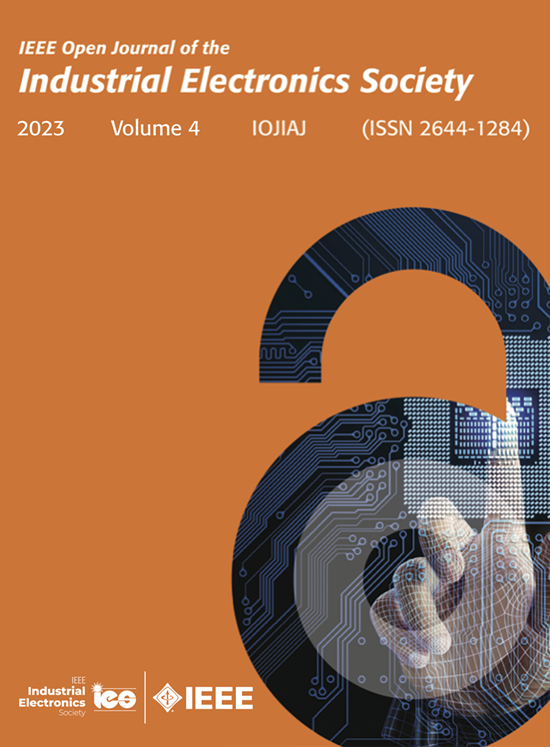Optimal Whole Body Trajectory Planning for Mobile Manipulators in Planetary Exploration and Construction
IF 4.3
Q1 ENGINEERING, ELECTRICAL & ELECTRONIC
IEEE Open Journal of the Industrial Electronics Society
Pub Date : 2025-08-11
DOI:10.1109/OJIES.2025.3597747
引用次数: 0
Abstract
Space robotics poses unique challenges arising from the limitation of energy and computational resources, and the complexity of the environment and employed platforms. At the control center, offline motion planning is fundamental in the computation of optimized trajectories accounting for the system’s constraints. Smooth movements, collision and forbidden areas avoidance, target visibility (TV), and energy consumption are all important factors to consider to be able to generate feasible and optimal plans. When mobile manipulators (terrestrial and aerial) are employed, the base and the arm movements are often separately planned, ultimately resulting in suboptimal solutions. We propose an optimal whole body planner based on discrete dynamic programming and optimal interpolation. Kinematic redundancy is exploited for collision and forbidden areas avoidance, and to improve target illumination and visibility from onboard cameras. The planner, implemented in the Robot Operating System (ROS), interfaces the 3D Rover Operations Control Software (3DROCS), a mission planner used in several programs of the European Space Agency (ESA) to support planetary exploration surface missions and part of the ExoMars Rover’s planning software. The proposed approach is exercised on a simplified version of the Analog-1 Interact rover by ESA, a 7-degrees of freedom robotic arm mounted on a four wheels nonholonomic platform.行星探测与建设中移动机械臂的最优全身轨迹规划
由于能源和计算资源的限制,以及环境和所使用平台的复杂性,空间机器人提出了独特的挑战。在控制中心,离线运动规划是计算考虑系统约束的优化轨迹的基础。平滑运动、避免碰撞和禁区、目标能见度(TV)和能量消耗都是能够产生可行和最优计划的重要因素。当使用移动机械手(地面和空中)时,基座和手臂的运动通常是分开规划的,最终导致次优解。提出了一种基于离散动态规划和最优插值的最优全身规划方法。运动冗余被用于避免碰撞和禁区,并提高车载摄像机的目标照明和可见度。该规划器在机器人操作系统(ROS)中实现,与3D火星车操作控制软件(3DROCS)接口,后者是欧洲航天局(ESA)几个项目中使用的任务规划器,用于支持行星探测表面任务和ExoMars火星车规划软件的一部分。所提出的方法在ESA的简化版Analog-1 Interact漫游者上进行了试验,该漫游者是一个安装在四轮非完整平台上的7自由度机械臂。
本文章由计算机程序翻译,如有差异,请以英文原文为准。
求助全文
约1分钟内获得全文
求助全文
来源期刊

IEEE Open Journal of the Industrial Electronics Society
ENGINEERING, ELECTRICAL & ELECTRONIC-
CiteScore
10.80
自引率
2.40%
发文量
33
审稿时长
12 weeks
期刊介绍:
The IEEE Open Journal of the Industrial Electronics Society is dedicated to advancing information-intensive, knowledge-based automation, and digitalization, aiming to enhance various industrial and infrastructural ecosystems including energy, mobility, health, and home/building infrastructure. Encompassing a range of techniques leveraging data and information acquisition, analysis, manipulation, and distribution, the journal strives to achieve greater flexibility, efficiency, effectiveness, reliability, and security within digitalized and networked environments.
Our scope provides a platform for discourse and dissemination of the latest developments in numerous research and innovation areas. These include electrical components and systems, smart grids, industrial cyber-physical systems, motion control, robotics and mechatronics, sensors and actuators, factory and building communication and automation, industrial digitalization, flexible and reconfigurable manufacturing, assistant systems, industrial applications of artificial intelligence and data science, as well as the implementation of machine learning, artificial neural networks, and fuzzy logic. Additionally, we explore human factors in digitalized and networked ecosystems. Join us in exploring and shaping the future of industrial electronics and digitalization.
 求助内容:
求助内容: 应助结果提醒方式:
应助结果提醒方式:


